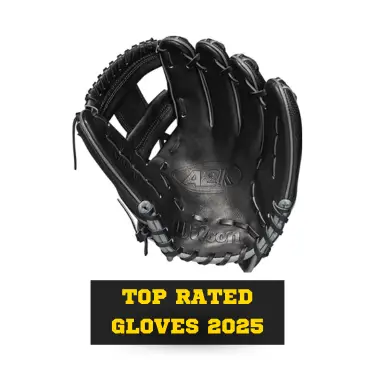 If you really want to play baseball properly, you will need to get the best baseball gloves you can afford.
If you really want to play baseball properly, you will need to get the best baseball gloves you can afford.
Baseball isn’t just about hitting. It’s also about properly fielding your position.
To do that, you need a glove that’s right for you and for the position on the field you play.
The great thing about the best baseball gloves is that they actually work better as more time passes. The leather molds itself to the shape of your hand.
It forms a nice pocket for the baseball, and it becomes easier to open and close.
As you get used to it, you’re able to catch more balls and it’s faster for you to open the glove so you can pass the ball to a teammate.
Of course, there’s also the position you’re playing. Some gloves are designed and marketed for certain specific positions.
Best Gloves for Pitchers
The first thing you need to remember about pitching is that the pitcher needs to hide the grip from the batter. That means you need a closed web so there’s no peeking.
Then you also need some sort of room inside so the pitcher can grip the ball in various ways.
There’s also the task of fielding. When you try to list down the best pitchers, you don’t often consider how they field their position.
But that’s actually one of the more important tasks of a pitcher.
It’s not just a matter of helping the team with good fielding. Sometimes it’s just a matter of self-preservation.
After all, they’re the closest fielder to the batter, and that means the ball can get to them very quickly.
Also, the mound can make the ball go in unpredictable directions, so quick reflexes are crucial.
In general, pitcher’s gloves measure anywhere from 11 to 11.75 inches.
That’s a good enough size so that the glove hand can move quickly to at least block the ball from hitting the pitcher!
Wilson A2000 CK22 Clayton Kershaw Game Model Pitchers Glove
Last update on 2025-04-25 / Affiliate links / Images from Amazon Product Advertising API
At first glance this 11.75-inch glove doesn’t look like a pitcher’s glove at all since it features an open webbing design.
But some pitchers actually use this.
That’s because the webbing isn’t really that open, so the pitchers can still hide the ball easily enough when they grip the ball.
Learn More About This A2000 Kershaw 11.75″ Glove
At the same time, it’s also a great infielder’s glove. That makes it perfect for many players who pitch and also play other infield positions.
This is part of the A2000 Wilson gloves, and it features the excellent Pro Stock leather American Steerhide that’s chosen specifically for use in the best Wilson baseball gloves.
This glove features the Dual Welting design. This is the special finger design that’s pre-curved so that the pocket of the glove is really stable.
The design helps the glove close over the ball and it also strengthens the finger slots so they will keep their shape longer.
It also comes with the Dri-Lex wrist lining that keeps you hand cool by absorbing the sweat from your skin.
This is a Wilson A2000, and its legend lives on.
This is the glove that many pros use and it’s always mentioned whenever the best baseball gloves are discussed and listed.
Best Gloves for First Base
In many ways, the first base glove resembles the baseball catcher’s mitt because many of the defensive plays end up with the ball being thrown to first base.
That’s why they’re often called the catchers of the infield. So you will need an especially durable and tough mitt because as the 1st baseman you’re going to catch a lot of balls.
This also means that the glove for the 1st baseman is going to be a little bit larger so that catching the ball is easier.
At the same time, the 1st baseman still needs to field balls that come their way too. So they can’t very well use a catcher’s mitt.
The glove should also allow the player to get their hands on the ball easily, just in case there’s a runner going for home.
Nokona Walnut Series: W-N70 First Base Mitt
Last update on 2025-04-25 / Affiliate links / Images from Amazon Product Advertising API
Now this is a proper mitt for a 1st baseman. Yet at the same time, it’s actually much more versatile than you think. The design actually makes it useful for both baseball and softball.
Check Price/Get More Info Here
First you have a large pocket along with a huge opening space. That makes it much easier for you to securely catch all those balls coming your way to 1st base before the hitter gets on base.
It’s very large at 13 inches, and that’s all well and good. The back is also closed so you get the stability you need for the catch. The web is also closed so you can really secure that ball.
The leather used here is Walnut Steerhide, and it’s very flexible and lightweight.
Breaking it in doesn’t take long, and after 2 weeks or so it should be just fine.
The wrist strap is adjustable, so you can fit your wrist in snugly. It’s also made in the US. Add the Nokona baseball brand to that and you have an especially durable first base mitt.
Best Gloves for Middle Infielders (Shortstop and 2nd Base)
These are usually the smallest gloves in the baseball field. Adult sizes range from 10.5 inches to 11.75 inches.
The glove specifically for the 2nd baseman is usually just a bit smaller than the glove for the shortstop.
The small size means a smaller pocket, and that’s a good thing for a middle infielder.
That split second difference may be all that’s need for a successful double play or beating a fast runner to a base.
This should also have an open back design for greater flexibility to make it easier to e to the ball and to transfer the ball to the throwing hand. Also, the webbing should be open so that the dirt can fall through the gaps.
Wilson A2K Baseball Glove Series
Last update on 2025-04-25 / Affiliate links / Images from Amazon Product Advertising API
When it comes to fielding the ball, the middle infielders really have it tough.
That’s why they need the best gloves, and for that you have this Wilson A2K 1787 that’s new for 2025. This is the top of the line model from Wilson, and that’s reflected in the high price.
==>> Read all consumer reports and reviews here
But then again you get a lot for your money, as the features in this A2K really make life easier or you when you’re the shortstop or the 2nd baseman.
Then it also has the rolled dual welting feature. Like the standard dual welting pre-curved finger design, it keeps the pocket shape for a longer period of time.
But this rolled dual welting version also makes the break-in go faster.
It also has the double palm construction. This means that inserted under the palm there’s another thin piece of leather. This really makes the pocket more durable and more stable.
Best Gloves for 3rd Base
For younger players, gloves for middle infielders ought to be just fine.
But the best infield gloves for 3rd basemen are generally just a tad longer.
That’s because the need all the help they can get trying to snag all those hard hit line drives and ground balls. It calls for a somewhat deeper pocket.
Lots of brands to choose from but for 3rd base I really like Rawlings youth baseball gloves.
Rawlings Heart of the Hide
Last update on 2025-04-25 / Affiliate links / Images from Amazon Product Advertising API
This is again a top of the line model, and it’s a beauty. It uses what’s called the Heart of the Hide steer leather, because the leather comes from the top 5% in quality from the center of the steer hide.
Then all that leather is laced together with Tennessee Tanning rawhide leather laces.
=> Read Consumer Reports & Reviews on This Glove
It is quite a comfy glove, and it protects your hand superbly from all those line drives. You have a padded palm and padded thumb loops, along with soft full-grain finger back lining.
You also get the “Deertanned Cowhide Plus” palm lining.
This version measures 11.75 inches, and it comes with a narrow fit and a pro H (open) webbing design. The narrow fit gives you a narrower wrist opening and the finger stalls are tighter.
That makes the fit more comfortable and more secure.
The break-in has also been accelerated.
Best Gloves for Outfielders
Many players in the outfield prefer huge outfield baseball gloves that may sometimes rival the size of the 1st baseman’s mitt.
In the major leagues, these gloves are limited to just 12 inches long yet some players sometimes fudge with the rules and go bigger.
If your league allows for bigger outfield gloves, then go for it.
You need bigger gloves in the outfield because you have to cover a lot of ground and you have fly balls to catch.
Sometimes you may even have to try to steal a home run by catching a ball over the fence.
NOKONA Walnut Series 12.75″ Outfield Baseball Glove
Last update on 2025-04-25 / Affiliate links / Images from Amazon Product Advertising API
This is made in the US. The Nokona brand is actually named after the Nocona town in Texas where this is made, and they’ve been making excellent gloves since 1934.
This glove is specifically the outfield model.
It measures 12.25 inches and it features the Six Finger Trap Web that makes it so much easier to catch all those fly balls.
It’s made with buffalo and stampede leathers, and it’s not that heavy at 0.56 grams.
It comes with a game-ready feel right away, and it provides an intermediate fit that’s great for young adult outfielders.
For more youth gloves you can visit this page.
Marucci Oxbow M-Type Baseball Glove Series
Last update on 2025-04-25 / Affiliate links / Images from Amazon Product Advertising API
Now this is a huge outfielder’s glove as it measures 11.50 inches.
It uses premium Japanese kip leather with soft cowhide leather fingerback and palm lining.
The thin heel padding is like that seen in the majors, since it offers a better feel for the ball and the break-in is easier.
This really seems professional, in feel, durability, and performance. It’s been handcrafted to the highest standards so that pros can use this.
In fact, pros like Chase Utley who is a partner of Marucci fielding gloves were consulted for the design of the glove.
The H-web design lets you track fly balls more easily.
For greater durability, there’s double lace reinforcement in the web. It even comes with the Tri-Welt Pinky Construction that lets you shift your fingers in the pinky stall more comfortably.
Mizuno Pro Limited Edition Glove
Last update on 2025-04-25 / Affiliate links / Images from Amazon Product Advertising API
This limited edition glove features perhaps the strongest leather in any Mizuno glove.
It uses the Japanese Deguchi-tanned Northern European Kip Leather that’s soft and strong and has tighter fibers. Then the leather goes through a special tanning process that really optimizes the strength of the leather.
It’s perfectly balanced, and it’s lined with unbelievably soft elite deerskin.
You have 3 options for your index finger position, so you can get the level of comfort and control you want. It also offers a bigger pinky slot, so you can shift your finger for greater leverage.
This comes with the regular open back, and the web design is the one used by Ichiro. That web design looks like a fishing net.
When this first came out, it also came with a rather prohibitive $400 price tag.
The Best Baseball Catchers Mitt
Catcher is a position of skill, technique and protection.
They protect the plate at all costs.
This player also needs top of the line protection with a catchers mitt.
The position of catcher receives the ball more than any other player on the field.
They also receive it many times anywhere between 70 and 90 miles per hour.
Bottom line: buy the best mitt you can. Here are three options for you to investigate.
Last update on 2025-04-25 / Affiliate links / Images from Amazon Product Advertising API
Last update on 2025-04-25 / Affiliate links / Images from Amazon Product Advertising API
Last update on 2025-04-25 / Affiliate links / Images from Amazon Product Advertising API
Buying Guide Factors To Consider
There’s no such thing as a baseball glove that’s good for every fielder.
Each position has different requirements. There are also some other overall consideration which you have to factor in.
Price
- This is often the most important consideration for any consumer. After all, not everyone can drop hundreds on a glove each season.
Usually, you shouldn’t spend too much on baseball gloves for newbies and young players. You will however want to invest in a high quality glove the longer you play.
You don’t want kids to outgrow their gloves very quickly.
It’s only when the player is perhaps in high school when more expensive gloves make more sense. The general rule is that when you pay more, you get higher quality.
So even though you spend more money on the glove at the start, you can enjoy more years using it.
Besides, the cost is worth it if the glove really offers superior performance.
Most of the great gloves cost right smack in the middle of the $200 to $300 range. But a few cost even more than that, though they don’t go over the $400 mark.
-
Some people think that price of the baseball glove just depends on the brand.
Actually, it depends more on the quality of the leather used for the baseball glove.
So for newbies and young players, affordable synthetic leather should do nicely. It doesn’t even need a lot of break in time at all.
It won’t really last for more than a couple of seasons and it doesn’t really mold itself to the shape of the hand, but then again young players will quickly outgrow them anyway.
Beginners will also want a better glove once they take to the game.
Then you have the oil-treated leather. The oil softens up the leather so they’re easier to break in. You also have the top grain leather, which is a bit stiffer but should do nicely.
This is great for older and more serious players, as they cost a lot more and should last for many seasons.
-
This refers to the glove area that connects the thumb part to the other the finger slots.
It provides you with a basket configuration for the glove so it’s easier to catch the ball. Many manufacturers come with distinct webbing types, but they all tend to be either closed or open webs.
When you have a closed web, the leather pattern is tightly woven and there are no gaps in the webbing. This makes it great for pitchers, so that they can grasp the ball and the hitter won’t know the kind of grip is on the ball.
This keeps them from anticipating the type of pitch that’s coming. Outfields also like this kind of webbing because it helps block out the sun when they’re trying to catch a fly ball.
With open webbing, you usually have a cross pattern for the leather pieces so there are gaps in the webbing. Other outfielders may choose this style because the gaps can help them track the fly ball through the gaps.
Infielders also tend to go for this type of webbing because the gaps allow any scooped dirt to fall through.
-
This is the glove part that’s at the back of the hand.
It’s either an open or closed design, and the best choice is usually the design which feels best for you. Generally, there’s not much difference between them in terms of performance.
However, infielders may want to go with the open back design. That’s because the open design allows for more flexibility for the wrist, which helps infielders deal with ground balls.
It’s also cooler because of the extra ventilation, and that’s a good thing for summer season games.
On the other hand, 1st basemen and outfielders may want to consider the closed design. It offers more stability, which helps when trying to catch speedy line drives.
-
This really depends on the position. Bigger gloves are slower, but they provide a bigger basket so catching the ball is easier.
On the other hand, smaller gloves are easier to move around so you can get to the ball more quickly.
Of course, you should also make sure that the size matches the size of the hand. Young children should go for 9-inch infielder’s gloves and 11-inch outfielder’s gloves.
From ages 9 to 13, the infield gloves should be about 9 to 10 inches while in the outfield it should be 11 to 12 inches.
Older kids should go for 10.5 to 11.5 inches in the infield, and 12 to 12.75 inches in the outfield.
-
This is not really a rational factor to consider, but then again baseball is a game in which fandom is a natural phenomenon.
In this case, you may have some sort of affinity for a certain brand with a great history. You may also go for a brand that’s used by your favorite player.
However, this factor should only come in if all the other factors are equal and you need to choose between 2 gloves with similar prices and performance benefits.
It shouldn’t really be a top priority when you’re choosing your own baseball gloves.
Leather Quality
Webbing
Backing
Size
Fandom
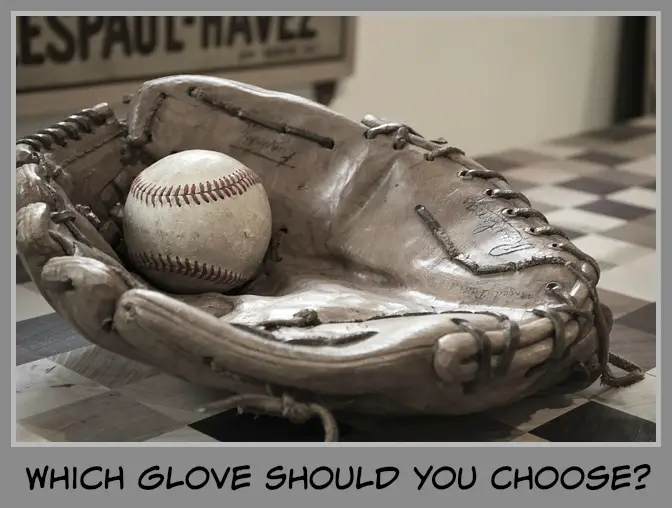
Final Thoughts on Picking The Best Baseball Gloves
Although they didn’t make the list, honorable mentions go to Shoeless Joe gloves, Akadema and Louisville Slugger.
So pick a glove here for your position, and get ready for excellent performance.
The only downside to these gloves is that you can’t blame your equipment if you make an error. But these gloves can help make those fielding errors come much less frequently.
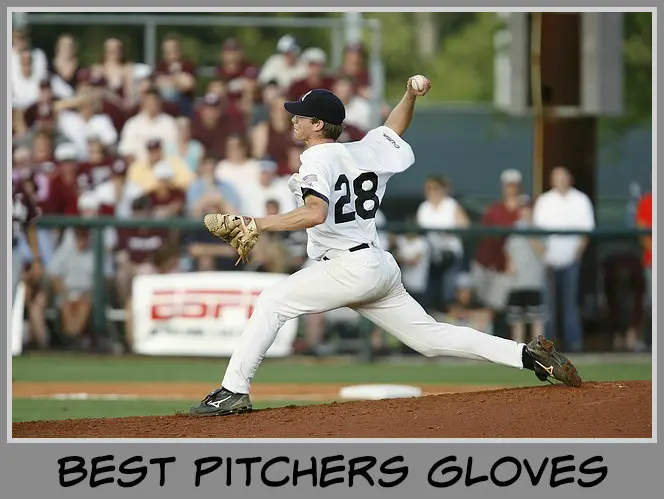

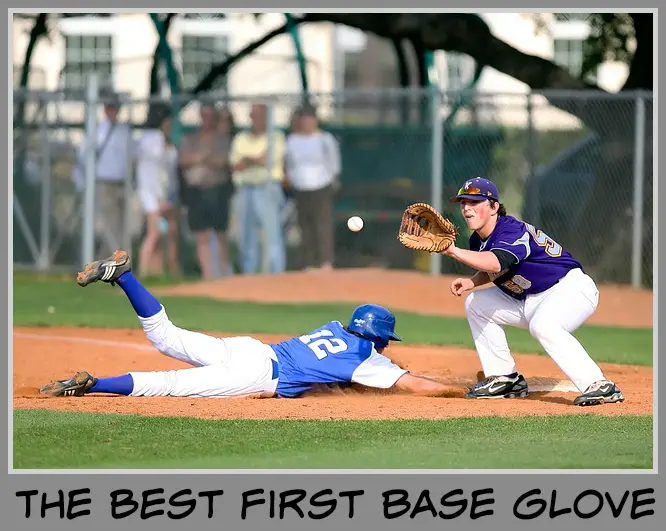

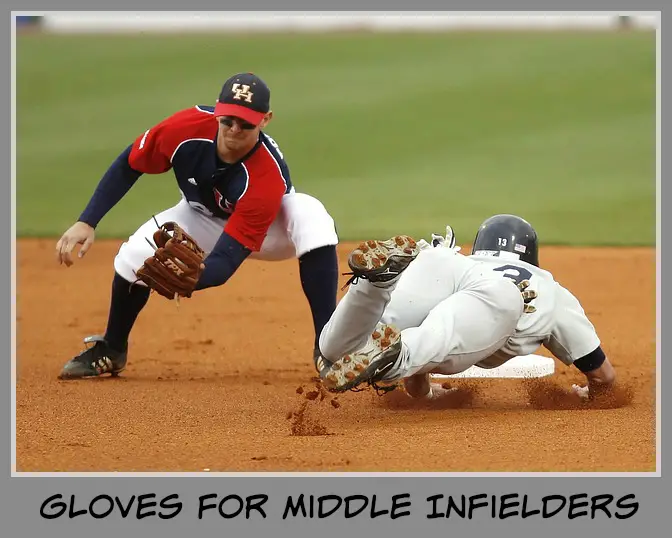

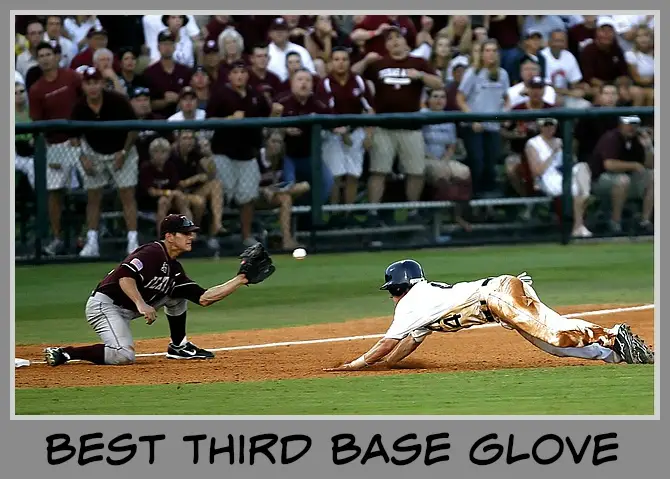

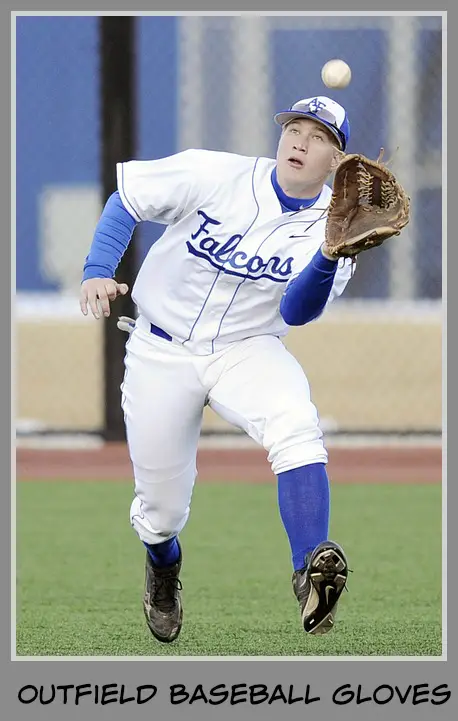



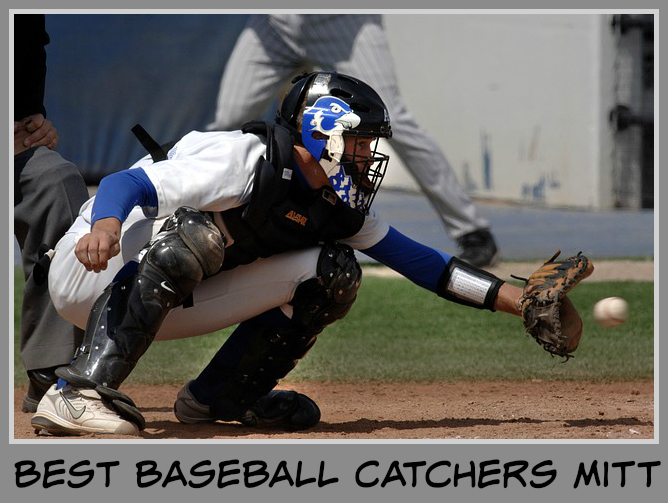



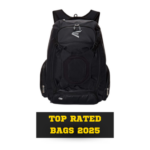
great breakdown but the list is missing Akadema on it. Not many reviews out there that don’t have Akadema in it. Marucci, like Easton, is a bat company…..they make gloves, but they’re not the same quality as the others on this list and Akadema.
I do personally like Akadema gloves and the ARZ136 is close to my list as far as outfield gloves.
Great list of gloves. and the breakdown was great!!! But, no Akadema on any of these lists…..surprised.
I like the Akadema ProSoft gloves but not as much as the gloves I’ve listed here.
I coached baseball for 54yrs so I’ve seen a couple gloves. I’ve also repaired over a thousand gloves. Price definitely increases the quality of leather my favorite gloves are Nokona and I love the fact they’re made in the good Ol USA. Wilson and Rawlings are great companies and all the other manufacturers just copy them. I’m not sold on Wilson putting synthetic material on the back of their high end gloves. I guess I’m old fashioned and like a glove to smell good all over.
Hi coach, there is definitely a difference between leathers. I currently have a high end glove and the leather is so much better and durable than cheap gloves it’s amazing! My son is starting to pitch so I’d love to get a Nokona catchers mitt…but for left handed.